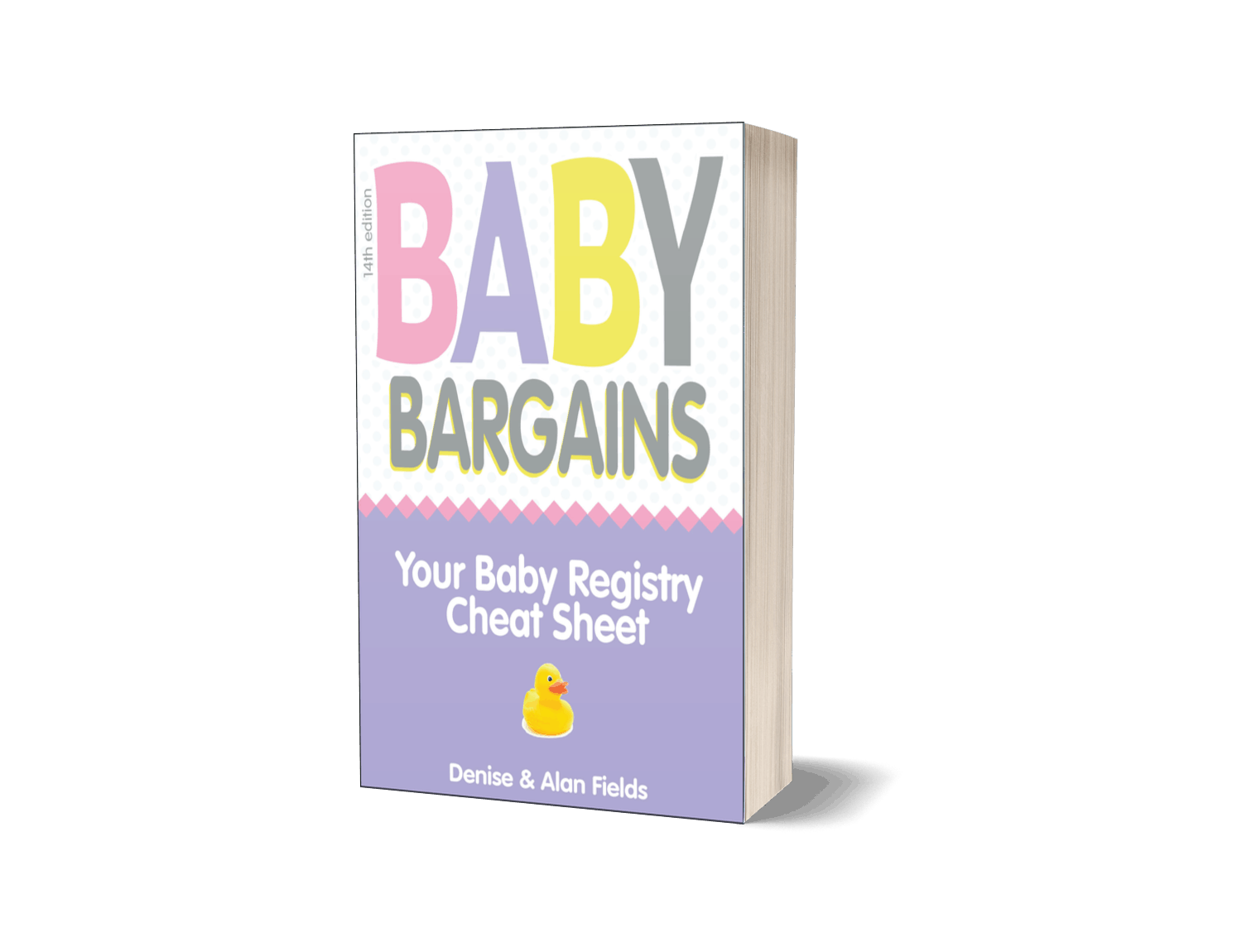 Reader Heather M. writes in today with a simple question:
Reader Heather M. writes in today with a simple question:
I recently bought the most current version of your ebook and I had a question about the Ikea Cribs and Mattresses. Since you don’t recommend the Ikea Mattresses, but the cribs are slightly bigger than the average crib and therefore need a slightly larger mattress, what mattress(es) would you recommend that would fit snugly in an Ikea crib?
This seems like a straightforward question—and an issue we see mentioned in Amazon reviews of crib mattresses we recommend, where one user complains X brand mattress won’t work in an IKEA crib.
To answer this question, we turned to a crib mattress expert, Barry Cik, the founder of crib mattress maker Naturepedic. Barry has forgotten more about crib mattresses then we’ll ever know. So here’s more than you ever wanted to know about crib mattresses . . . a master’s degree on the subject, if you wish!
Q. What is important to remember when it comes to crib mattresses fitting a crib, no matter what brand? (IKEA, we are looking at you)
Fasten your seatbelt: There is no crib mattress, regardless of brand, or model, or SKU, anywhere that properly fits every crib on the market. This is not a matter of the quality of the brand or the product. It’s a simple matter of allowable dimensions of the crib.
Q. Ok, we’ll bite. What are the allowable dimensions of a crib?
· Width: 28” plus or minus 5/8”, which means that the allowed width is 27 3/8” to 28 5/8”
· Length: 52 3/8” plus or minus 5/8”, which means that the allowed length is 51 3/4” to 53”
The crib mattress has to be no less than 27 ¼” width by 51 ¼” length. Here is the CPSC standard for the above crib measurements.
Q. So what does that mean in the real world?
If a crib is made to the smallest allowable dimensions , i.e. 27 3/8” by 51 3/4”, then the only crib mattress that will fit into that crib is a crib mattress made to approximately the smallest allowable crib dimensions, and in particular approximately 27 1/4” wide, which would allow for 1/8” gap in the width between the mattress and the crib.
But if the width of the crib mattress is made at 27 ¼”, then what happens when you try to put that same mattress into a crib that was made at the largest allowable dimensions, i.e. 28 5/8” wide? The width of the mattress is 27 ¼” but the width of the crib is 28 5/8” – Bingo! You now have a two finger gap (certainly for a petite woman).
And length-wise, if the mattress was made at the minimum allowable dimension, i.e. 51 ¼” , and the crib was made at the maximum allowable dimension, i.e. 53”, then you also have a two finger gap.
Q. So in both the above cases, did anyone break the rules . . . enabling a crib mattress with a dangerous gap?
Neither the crib manufacturer nor the crib mattress manufacturer did anything wrong, as they both are in compliance, but you have a two finger gap nonetheless.
Q Well, that’s fantastic. So the solution is for crib mattress makers to make mattresses on the bigger side?
Let’s assume the mattress manufacturer recognizes that his mattress will lead to two finger gaps in many of the models on the market, and decides to increase the dimensions so that the mattress will fit into the larger mattresses.
Let’s say the mattress is now 28 2/8” by 52 5/8”. That’s a gap of 3/8” which would be a good fit for the larger cribs, but this mattress will now simply not fit into a crib with dimensions at or near the lower allowable limit. So sometimes the mattress is too small and sometimes the mattress is too big. It depends on the crib, not the mattress.
Then it also depends on whether the customer does or doesn’t have a sheet and/or a fitted pad, and how thick those are.
Q. Ok, our head is hurting now. Is there someone we can blame for this?
Here are the roots of the problem:
The mattress manufacturer doesn’t know what crib the customer will put the mattress into.
The mattress manufacturer has no knowledge of the actual dimensions of the cribs that were made on the last shipment from China for every brand and model being sold this month in the marketplace.
The mattress manufacturer has no knowledge of whether the customer did her “measuring” with or without a sheet or a pad, and how thick those were.
Regardless, in the mind of the consumer, the mattress manufacturer is always at fault. No one ever says that the crib was too small or too large. Everyone always says that “the mattress didn’t fit.” The problem (in the mind of the consumer) is always with the mattress. I just looked at the reviews on Amazon from your link, and one review (KelleyandAlex) says it all, and I quote: ”The problem was not with the crib. The problem was with the mattress.” In the eyes of the consumer, the fault is always that of the mattress manufacturer, period. Consumers just don’t typically realize that the problem may be the crib dimensional details, and not the mattress at all.
Q. Good point. Ok, let’s pick on crib makers. How do they add to this problem?
Some of the crib manufacturers don’t strictly adhere to the standard. I’ve measured some cribs (sold at major retailers) and they were larger than the permitted maximum dimensions.
Then comes the issue of the corner posts, which is a separate issue, but is just as important. Every crib has four posts that hold up the crib. Some models have those four posts outside of the rectangular space where the mattress fits into. But in many models, in each of the four corners, the posts protrude inwards into the rectangular space where the mattress needs to fit. This alone can totally screw up the fit, particularly if the mattress has firm edges which clash with the posts that are in the way of the rectangular shaped mattress.
Q. Why is this becoming an issue now? The rules of crib size and mattress fit have been around for a while.
The two finger standard has been around for as long as I can remember, but it’s only become a major issue recently, as consumers are becoming more knowledgeable about the safety issues with crib mattresses.
And the consumers who do know and care about the two finger issue tend to be those who are educated and who are buying the higher priced mattresses.
So the problem is no different regardless of which brands, but many consumers buying the less expensive products at less expensive stores are not generally as concerned.
Then, most crib mattresses five or ten years ago were a slab of mushier polyurethane foam. Mushy foam can, for example, squeeze and fit around the protruding corner posts. An innerspring mattress, with rigid corners, just can’t do this. Neither can our lightweight mattresses, for example, which are rigid along the edges similar to the innerspring models.
So, in the past, the two finger issue was never a major issue. It now is.
Q. What can be done about this?
There are dozens of cribs on the market. They all have different dimensions (no joke). Some are even actually larger than the allowable dimensions. Some are on the smaller side of the allowable dimensions (and then some of those have inward protruding corner posts as well).
So, as I said up front, it doesn’t matter the brand, or the model, or the SKU – it is impossible to make a mattress that will properly fit every crib on the market. If the crib people are permitted to have such variability, there is little that any crib mattress manufacturer can do.
If you wish, please join me in letting the CPSC know that the best way to rectify this situation is to tighten the limits on the crib manufacturers. Instead of plus-minus 5/8”, they should be limited to plus-minus 2/8”. They can saw their wood, or mold their plastic, easily within that smaller range. Further, intruding corner posts should not be permitted. The mattress needs to fit into a rectangle, and that rectangle needs to be a rectangle.
Q. Ok, let’s name some names—which crib makers are the biggest offenders?
Pottery Barn, DaVinci, and Ikea.
But even that is unpredictable, because this month’s shipment from China of cribs to the retailer may be a different size or design than last months.
In any event, while the blog posts you referred to had nothing to do with our mattresses, I’ll use us as an example to help explain the issues. In regards to our mattresses, most of the problems with cribs from the above three manufacturers/retailers, more times than not, have been that our mattresses were too big, not too small. As such, the problem was not that there was a two finger gap, or any gap for that matter. The problem was that the fit was too tight, and sometimes that the mattress wouldn’t fit at all. And, when our customer service people told whoever, per your link, that there were problems with (some of) the cribs sold by these three companies, our customer service people were referring to the fact that the problem is that our mattresses may be too large (not too small).
So the comment by your reader that Ikea cribs are now too big is actually a change from our experience with Ikea. We’ve been telling people who ask, for a couple of years now, that Ikea (and Pottery Barn and DaVinci) may not be a good fit for our mattresses because (many of) their cribs are too small for our mattresses .
It just depends who actually makes the crib. Take Ikea for example, again. They have their own branded cribs, and their own branded crib mattresses, and they still have issues. So now imagine trying to make a mattress that will fit into all the brands in the marketplace when you have no clue as to this month’s sizing for dozens of cribs.
Q. What does Naturepedic/Lullaby Earth do to address this problem?
We have very few situations where someone complains that there was a two inch (or larger) gap. The reason that we don’t get many such complaints is that we do not make our mattresses at or near the very low end even if that’s allowable (and we certainly aren’t doing that recently). As such, we tend to get more complaints that our mattresses are too BIG for (some) cribs.
That’s not to say that we get tons of fit complaints. We don’t. But it’s impossible to fit properly into every crib. We simply have no control over that. All we can do is make our mattresses at a size where there are few complaints in either direction, and that’s what we do. But we do err on the side of our mattress being too big (for some cribs), rather than being too small (for other cribs). This way we have very few two finger gap complaints (which is a much bigger concern than the mattress being too large in other cribs).
Of course, there is also the issue of “whose two fingers?”. If a petite woman is measuring, that’s far different than a larger person. In general, our innerspring mattresses are slightly larger (I mean very slightly – like no more than 1/8”) than our lightweight mattresses, and if the innerspring mattress is also taped (as opposed to seamless) then the tape makes it a touch larger to a consumer. So sometimes we solve a customer’s problem by switching between the construction types (if they call us and we understand the issue). But sometimes they just go on Amazon and complain and that’s that. So if the mattress happens to be one of ours, and if the customer contacts us, we can generally help them resolve the dimensional issue.
It is our policy to make things right for the customer. Sometimes we do so even if the retailer is not cooperative (i.e. the retailer should be taking the return, not us, but sometimes we take the return and refund the customer ourselves).
FYI: One of our office people just told me that her friend had an Ikea crib and just bought a Naturepedic crib mattress for it, and it fit perfectly. So this just reinforces the point that every time a shipment of cribs comes in from China, the dimensions are not necessarily exactly the same. It’s a problem for the whole industry, and it doesn’t matter which brand or model or SKU.
This problem won’t be solved unless the CPSC makes stricter dimension requirements for the cribs. Meanwhile, all we can do for our mattresses is design the mattresses to best fit most of the cribs in the marketplace, and with intentionally making them a touch bigger than the average. This way there will be little to no gaps that would approach a two finger gap, even though the down-side of this approach is that our mattresses will be too tight for some of the smaller dimensional cribs being sold on the market.
—
So there you have it—more than you ever wanted to know about how crib mattresses fit into cribs. So the answer to whether you new IKEA crib will fit that crib mattress it . . . maybe yes, maybe no!

 We obsess over gear for families . . . so you don't have to. Baby Bargains has one mission: help you find the best gear for your family and home with unbiased reviews by experts with 20 years of experience. At prices that don't break the bank. When you purchase a product from links on this site, we make a small affiliate commission. Learn more
We obsess over gear for families . . . so you don't have to. Baby Bargains has one mission: help you find the best gear for your family and home with unbiased reviews by experts with 20 years of experience. At prices that don't break the bank. When you purchase a product from links on this site, we make a small affiliate commission. Learn more 

I bought an Ikea crib and the Moonlight Slumbers little dreamer 2 sided mattress, I think it fits pretty snug but don’t have to force it down either. Looks great too.
We wanted to use organic products for our baby especially in the nursery where most of babies spend a great amount of time. So we bought NaturalMat mattress, which fits our Ikea crib perfectly.
Can you advise whether the Lullaby Earth mattresses mentioned above and the Lullaby Mattress sold at Pottery Barn Kids are the same thing, or from the same manufacturer? I’m inclined to think they’re separate companies and completely unrelated but I wanted to make certain.
And if they are unrelated, have you reviewed the Lullaby mattresses? I would very much like to get the PBK Kendall crib, but not if the mattresses they sell for the crib are substandard.
Thank you.
Hi Kristi: Good question—we will look into it and contact the folks at Lullaby Earth! Will post here with the answer.
Alan & Denise
BABY BARGAINS
Hi Kristi: Official word is no—the Lullaby crib mattresses at Pottery Barn are NOT related to Lullaby Earth. Our best guess is the PBK mattresses are made by Simmons (hence the Wisconsin reference in the mattress description). We review Simmons on the member side of our site here: https://www.babybargains.com/2011/03/04/mattress-brand-review-simmons/